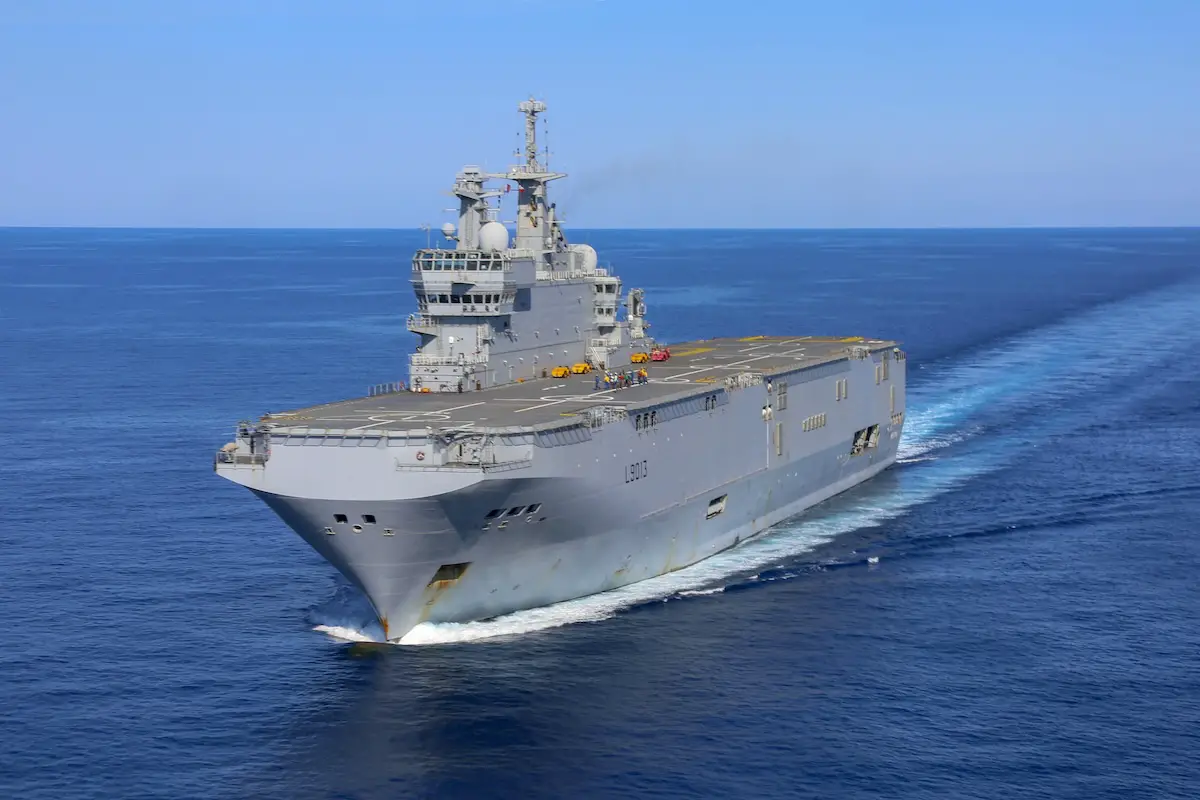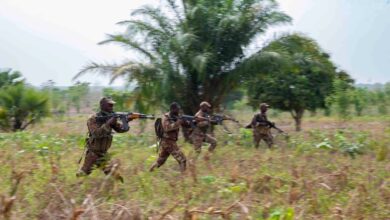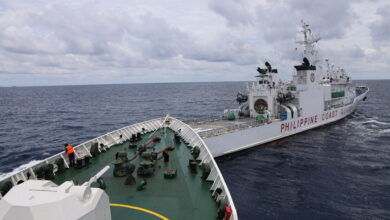The fishing boats look like tiny ants next to the sprawling French warship on patrol in the Gulf of Guinea.
The Mistral is deployed to help curb piracy and drug trafficking in one of the world’s most dangerous shipping routes.
But the timing of its presence off the West African coast amid tensions over a coup in Niger has sparked speculation.
The deployment “was planned a long time ago, at least a year,” well before the Niger coup, Captain Olivier Roussille told AFP.
The helicopter carrier, an amphibious assault command ship, is the French Navy’s second-biggest warship.
The blare of its horn warning the 199-metre-long (650-foot) vessel is about to depart the port of Lagos manages to cut through even the din of the Nigerian mega-city of 20 million people.
“With strong currents and loads of pirogues (motorised canoes) around, it’s complicated moving this 23,000-tonne vessel,” an officer onboard told AFP.
Surveillance, Rescue
It left the southern French port of Toulon in August on a four-month mission to the Gulf of Guinea, a major maritime route stretching 5,700 kilometers (over 3,500 miles) from Senegal to Angola.
The navy has maintained a permanent presence on the route since 1990 as part of France’s Corymbe anti-piracy operation.
Paris has significant economic interests in the region, mostly linked to oil exploration.
“We work alongside navies from countries of the Gulf of Guinea… to fight piracy, illicit trafficking including drug trafficking, but also illegal fishing, which are real scourges,” Roussille said.
Its role includes surveillance at sea, the sharing of information as well as operations and exercises.
In Lagos, where two AFP journalists embarked, staying onboard for 24 hours, the Mistral took part in two exercises with the Nigerian navy.
One was to monitor a suspicious vessel transporting illegal petrol and cocaine, while the other simulated a rescue operation of hostages kidnapped at sea and taken on land.
Withdrawal from Niger
But its presence in the gulf at a time when West African nations were threatening to intervene militarily in post-coup Niger has drawn attention.
France has backed the West African bloc ECOWAS which threatened to use force as a last resort to reinstate Niger’s democratically elected president Mohamed Bazoum.
Relations between Niger and its former colonial power deteriorated fast after the July 26 coup.
Paris had sought to make Niger a regional hub in the fight against jihadists in the Sahel after its forces were pushed out of Mali and Burkina Faso.
Niger’s military rulers on September 10 accused France of deploying forces in several African countries with a view to a future “aggression.”
They claimed a French military ship that had docked three days earlier in the port of Cotonou in Benin was carrying personnel and military resources. France immediately denied the claims.
The Mistral did dock in Cotonou in early September as part of its Corymbe operation and for a conference organized with the Benin authorities, Roussille said.
“There was quite a lot of noise about our presence… but we were there only in the framework of this operation,” he added.
No equipment or personnel disembarked during the stop, he said.
Asked whether the Mistral could be involved in the French troop withdrawal from Niger, its captain did not rule out the possibility.
“Just like all the large amphibious vessels, we may be employed” for this kind of operation, Roussille said.
The French army faces a considerable task of repatriating its equipment from Niger mostly overland through Chad and then Cameroon by the end of the year.
The Mistral can carry up to 60 armored vehicles, 16 helicopters, and up to 900 soldiers.
With its capacity and current location, the vessel “may be one of the options,” Roussille said, adding however there was currently no plan.
“We haven’t been notified so far to take part in this operation and we are continuing our mission.”












